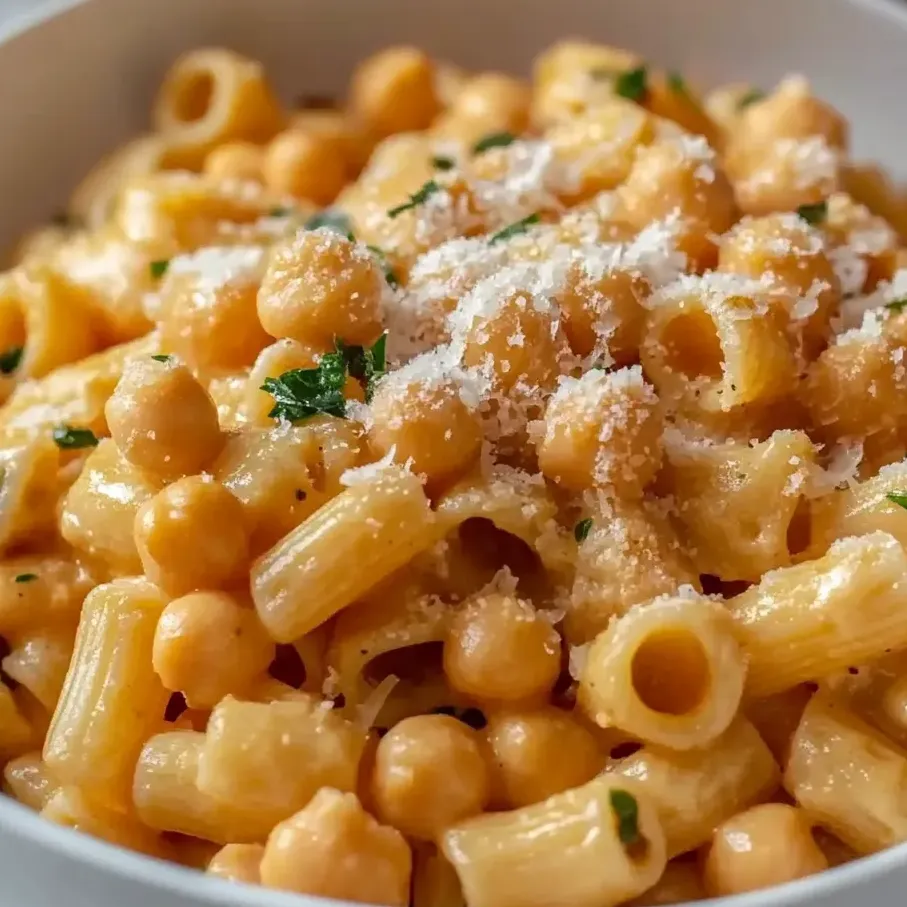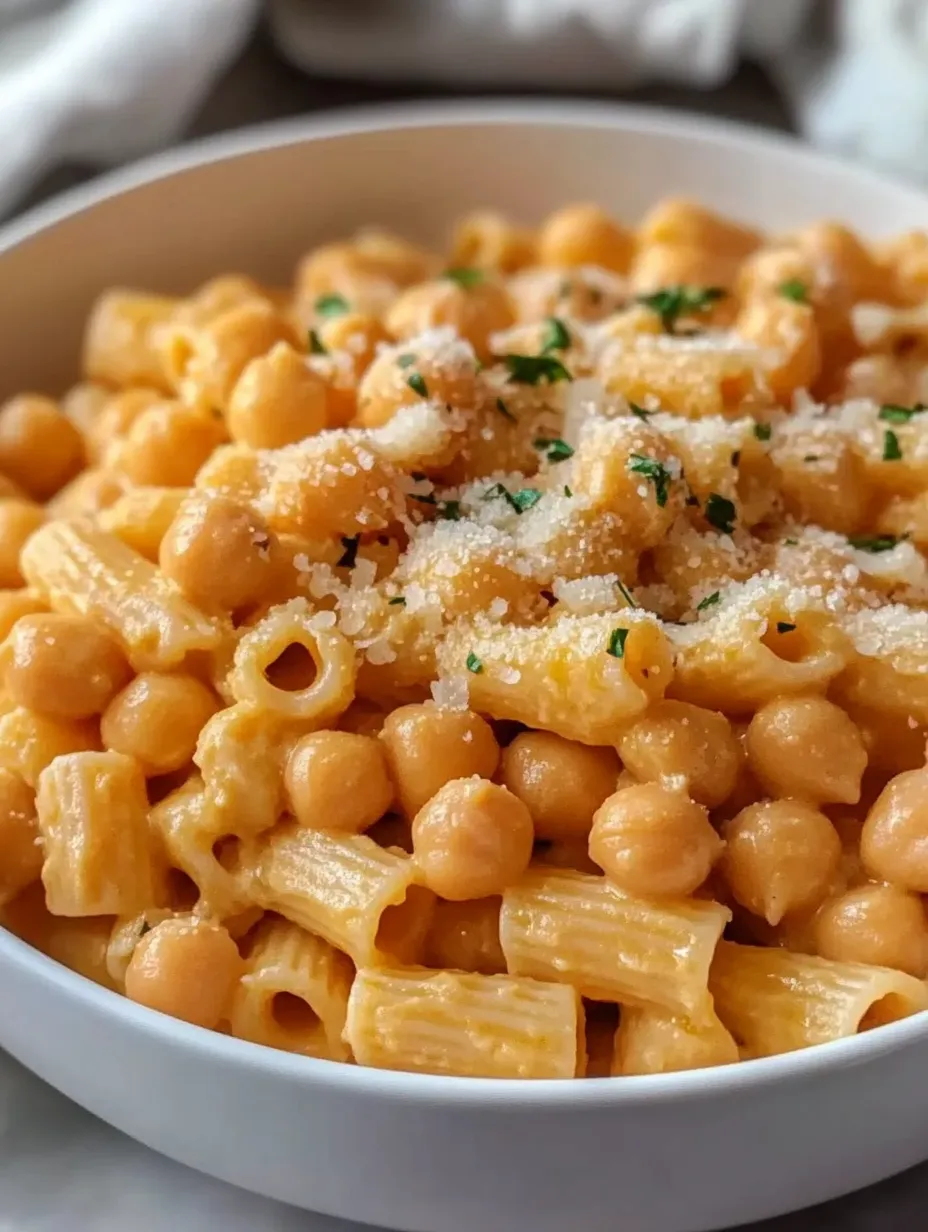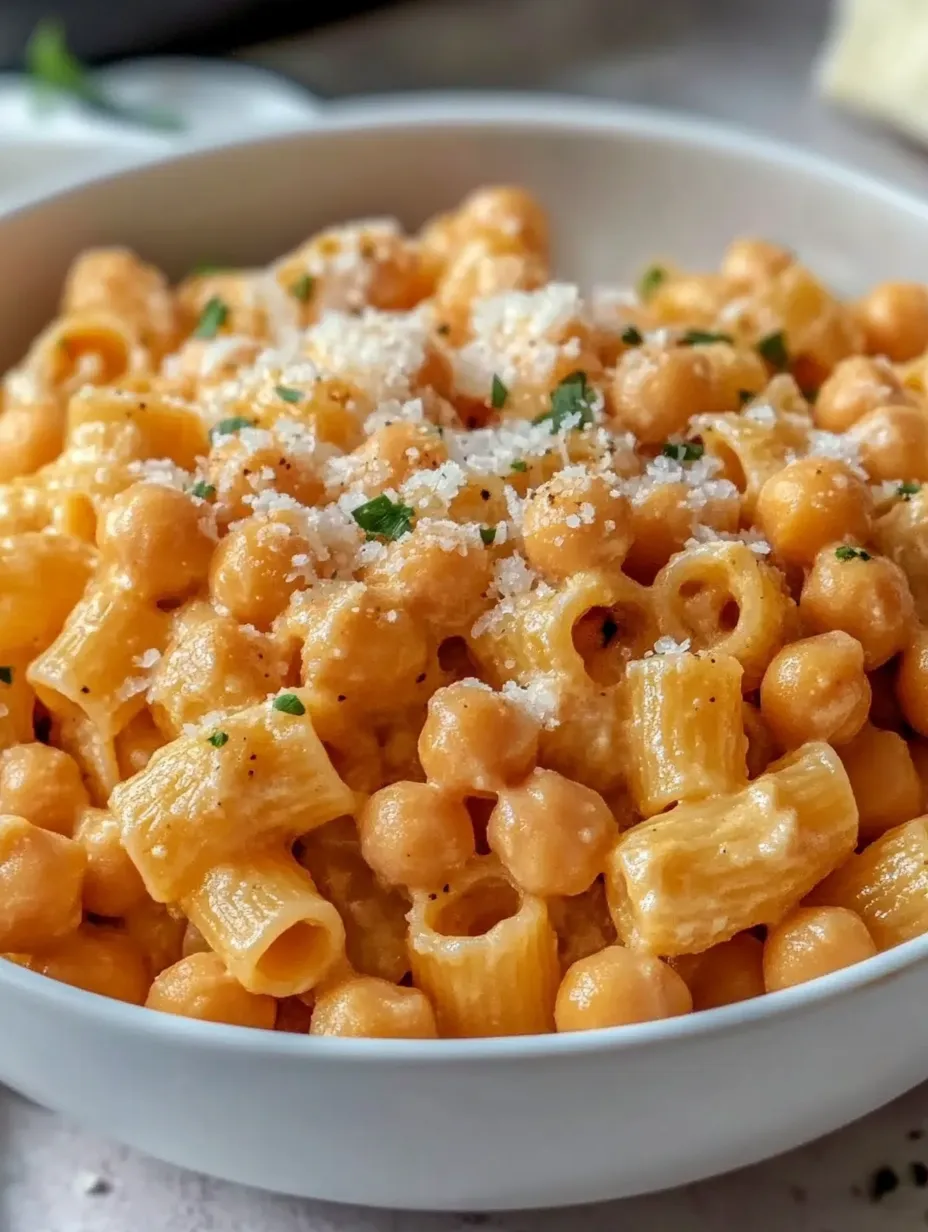 Pin it
Pin it
This humble Italian staple combines simple pantry items to make a soul-warming comfort dish that's stuck around for generations. The mix of soft pasta and velvety chickpeas swimming in tasty broth feels just like getting a cozy hug from your bowl.
I whipped this up for the first time during a tough week when I needed something fast but comforting. I love how the water from cooking the pasta mixes with smashed chickpeas to make everything almost creamy without adding any dairy. It's now my favorite quick dinner when I want something filling without a lot of work.
What You'll Need
- Chickpeas: They're the protein backbone and turn partly creamy when mashed
- Ditalini pasta: The classic choice, though any tiny pasta shape works great
- White onion: Gives a sweet aromatic base
- Garlic cloves: Add necessary flavor complexity
- Fresh rosemary: Brings woody scent that makes this dish special
- Tomato paste: Packs savory punch and nice color
- Chili flakes: Add subtle heat without overwhelming
- Dry white wine: Loosens pan bits and brings light tanginess
- Vegetable stock: Creates the smooth, tasty sauce
- Pecorino cheese: Adds salty richness and smoothness
Easy Cooking Guide
- Flavor Foundation:
- Warm olive oil in a pan over medium heat until it glistens but doesn't smoke. Cook the chopped onion for 5-6 minutes until see-through but not brown. This starts your flavor base. Toss in sliced garlic and cook just 1-2 minutes more until you can smell it. Watch carefully since garlic burns fast and turns bitter.
- Flavor Boosting:
- Throw in chopped rosemary and chili flakes, stirring non-stop for about a minute. The heat will wake up the rosemary oils and spices. Then mix in tomato paste and cook about 2 minutes, stirring often. This brings out the sweetness in the tomato and makes the flavor stronger.
- Making the Sauce:
- Splash in white wine or vinegar to unstick any tasty bits from the pan bottom. Let it bubble away for 2 minutes so the alcohol cooks off but keeps its taste. Add chickpeas and veggie stock, bringing to a gentle bubble. Smash about quarter of the chickpeas against the pan with your spoon. This lets out starch that naturally thickens everything.
- One-Pot Wonder:
- Drop dry pasta straight into the bubbling mix. Stir often so it won't stick, and cook until just tender, around 6-7 minutes. The pasta soaks up the tasty liquid and releases more starch for a silky sauce. If it gets too thick, splash in more stock or water.
- Final Touch:
- Pull the pan off heat and right away mix in grated Pecorino. The leftover warmth will melt it into the sauce making everything creamy without getting stringy. Taste and add salt if needed.
- Ready to Eat:
- Scoop the dish into warm bowls. It should be thicker than soup but saucier than regular pasta. Top generously with black pepper, extra Pecorino, and a drizzle of good olive oil. Add more chili flakes or fresh parsley if you want.
 Pin it
Pin it
The real trick to this dish is smooshing some chickpeas which naturally makes everything creamy without needing dairy. I picked up this move from an old Italian lady next door who always said this was what turned ordinary pasta e ceci into something special. She'd always remind me the pasta should be swimming but not drowning in sauce, and those crushed chickpeas were the key to getting it just right.
Ways to Make It Your Own
This dish is super flexible depending on what you've got in your kitchen. Try adding chopped carrots and celery with the onions for more depth. Toss in some kale or spinach during the last few minutes for extra nutrition and a pop of color. If you eat meat, cook some chopped bacon or pancetta with the onions for a smoky twist.
Prep Ahead and Keeping Leftovers
This stuff actually tastes better after a day as the flavors mix together more. You can make the whole thing up to two days before and warm it up slowly on the stove with a bit of water or stock to thin it out. The pasta keeps soaking up liquid while it sits, so you'll probably need to add more when reheating. Leftovers stay good in a sealed container in the fridge for up to five days, so it's perfect for planning your week's meals.
Where It Came From
Pasta e ceci comes from the clever 'poor cooking' tradition that's at the heart of Italian food. Going back hundreds of years, this dish shows how Italian home cooks turned cheap pantry stuff into something truly delicious. You'll find different versions all over Italy - some more soupy, others thick like stew. In Rome, folks traditionally eat pasta e ceci on Fridays, coming from the Catholic practice of skipping meat that day.
 Pin it
Pin it
Frequently Asked Questions
- → Can I swap ditalini for another pasta?
Absolutely! Small shapes like mini shells, orzo, or broken pieces of spaghetti can all work. Just adjust the cooking time based on the package instructions for your choice.
- → How can I make a vegan-friendly version?
If you're skipping cheese, use nutritional yeast or a vegan cheese swap. The broth can stay vegetable-based, and that's all you need to keep it plant-based!
- → Any tips to reheat leftovers easily?
Reheat gently on the stove with a little broth or water to loosen it up. Stir it now and then over a low flame until it's warmed through since the pasta absorbs liquid as it sits.
- → Should I go for canned or dried chickpeas?
Canned chickpeas (400g) make it quick and easy. If you’re going with dried, soak them overnight and simmer till soft before adding them. You’ll need about a cup and a half when cooked.
- → What if I want to skip the white wine?
No problem! Replace it with more vegetable broth and a splash of lemon juice for brightness. Diluted apple cider vinegar can also step in for that touch of acidity.
- → How do I adjust the thickness of the dish?
Want it chunkier? Mash extra chickpeas. Prefer it lighter? A bit more broth will do the trick. Keep in mind, it thickens as it cools, so adjust as needed.
